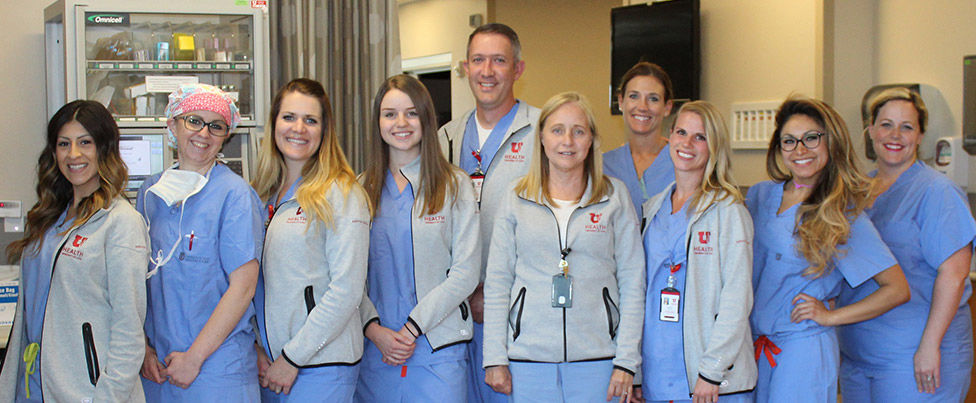#1 Declare your team’s shared purpose—WRITE. IT. DOWN.
Twenty years ago, Brent Klev began his health care career as a nursing assistant. Today, he leads South Jordan’s surgical center and a team of 28 nurses, health care assistants and scrub techs. It can be crazy—every day, the team supports different surgeons and up to 30 surgeries.
Klev wanted the employees and the physicians to know him and his beliefs, so he deliberately created a manifesto to share with each person on the team. The result—a supportive and collaborative culture that delivers “incredibly competent, experienced and collaborative” care every day.
The manifesto is a written document that outlines the important work of the department, the values that drive the work and the professional expectations that make the team work better. Klev reviews the document with every team member and all of his new providers.
He also shares the document with new physicians who will be performing surgeries at South Jordan. “I tell physicians that these are my expectations for the staff. The physicians are always surprised that it is spelled out like this. And I’ve found that this document helps them understand our culture and in turn, they adapt to our culture. I tell them ‘you’re part of our team, and we have a purpose together.’ It helps them understand how we expect each of them to lead our teams when they’re here.” ___
#2 The team supports the team to reinforce patient trust
Investing in team culture is the cornerstone of the department’s patient experience. Klev explains, “Our patients really notice the teamwork. They really love that one-on-one face time with the physicians, and comment about our streamlined process. They know that our team works well together.
One example is that we talk [the team] up. So when we go in to do a pre-op and one nurse is asking questions and the other nurse is getting ready to start an IV, they'll comment, ‘Hey, Debbie is one of the best IV starters here.’ Our anesthesia team even talks about the staff as they're wheeling back patients back, such as ‘You have the best OR nurse in the facility.’
For the patient, managing up the team instills patients’ confidence in our skills and our outcomes. Talking positively about each other to patients also makes the staff want to give their best each day, because they know that their teammates are looking out for them.
Shared Purpose Drives Collaboration
This HBR article sheds light on shared purpose as collaboration’s most unacknowledged determinant.
#3 Create a forum for shared purpose
Klev has a blog on Pulse called “Soap Box.” First, it started out as a way for him to share current events and team focus. "I’d share great patient comments, and in one particular instance, I shared a picture of the white board where a patient had left a note saying what a wonderful job we did."
He learned that even though the posts were positive, they were received initially as, ‘Just one more thing we gotta read.’ But he kept at it, and now staff share ideas about what to post in the blog. Over time, it has become a forum for providing real-time feedback and sharing educational articles and improvements. "I realized that my blog was critical for engagement last month when I didn’t post and about six people asked me when and what I was going to post next."
*Collected from Press Ganey Ambulatory Surgery survey, from surgery 2/7/17, accessed for this article July 27, 2017
Brent Klev
We begin every Accelerate interview by asking about a person’s intrinsic motivation to work in health care, lead a team, or make a change. In other words, we always start with “why.”
What can 15 years of team-building leadership teach you? A lot. Expressive therapies manager, Holly Badger supervised the Huntsman Mental Health Institute's (formally known as the University Neuropsychiatric Institute) ROPES Course before becoming a manager of UNI's Expressive Therapy program. Here, Holly gives Accelerate a crash course in building community while strengthening a team.
Learners, patients, and teachers are more confident and inspired when we take time to create positive learning environments. Pediatric endocrinologist Kathleen Timme gives practical advice for integrating key aspects of a positive learning environment into your daily interactions.

